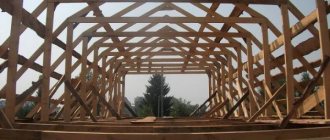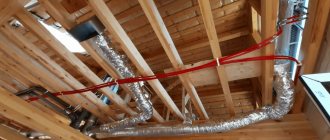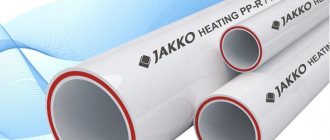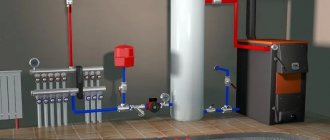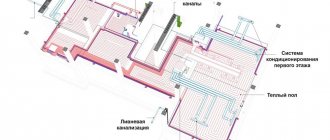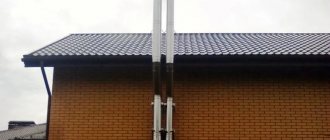With the onset of the winter months, coolant consumption increases sharply. The lower the temperature outside, the more difficult it is to heat the room. But in recent years, prices for basic coolants have begun to rise. And the forecast for the future is disappointing. Winters will not become shorter, gas will not become cheaper. After the long winter of this year, many had to think about how to heat a private home so that the family budget would not suffer.
In the past, everyone tried to connect the house to gas and use it for heating. This possibility does not always exist. Some home owners have calculated that it is now more profitable to change the heating system. There are other ways to reduce heating costs. Let's talk about everything in order.
Insulate the walls of the building
Before discussing options for heating a private building, it should be noted that a lot of heat is wasted. You burn gas, consume electricity, heat water. And the heat escapes through the walls and roof. Don't believe me? Take a walk along a private street in winter. Has the snow melted on the roofs of many houses? Why?
Heated air becomes lighter and tends upward. If the ceiling and roof are not insulated, heat penetrates outside, melts the snow on the roof, and heats the air around the building. The heat in the house does not stay and you have to constantly turn on the gas burner. And the foundation walls conduct cold and moisture. The room is constantly damp and cold.
Scientists have calculated that half of the home’s heat goes outside through the building’s structure. It will not be possible to insulate a building 100 percent. After all, the house must breathe. However, insulation work may well reduce heat loss by half.
There are many insulation options. For example, you can pump in liquid penoizol by drilling holes between the rows of brickwork. You can insulate external walls with foam plastic or mineral wool. A layer of expanded clay can be poured onto the ceiling.
The choice of materials for insulation is also constantly increasing. Polystyrene foam and mineral wool are cheap. But you can use other materials, for example, glass wool or polyurethane foam. In some cases, straw, hay, and sawdust are used as insulation.
Preparatory activities
Organizing stove heating involves preparing drawings, choosing a suitable location for pipes and radiators, as well as competent calculation of power. Next, a register is made or purchased and the structure with a built-in heat exchanger is laid.
Calculation of power and dimensions
The efficiency of a heat exchanger is determined by the materials from which it is made. Cast iron products of the MS-110-300 and MS90-300 series have a power of 0.14–0.16 kW/sq. m for the rib. Taking into account such figures, it is possible to predict the number of sections for heating each circuit. For 10 sq. m of area you need at least 1 kW. For a building of 60 sq. m. requires a register with a power of 5.5 kW.
The efficiency of a heat exchanger is affected by the materials from which it is made.
The dimensions of the furnace system are 1020x1160x2380 mm. The heat exchanger has dimensions of 750x500x350 mm.
Required materials and tools
To assemble the stove you need to prepare:
- A sufficient amount of fireclay and solid bricks with fire-resistant properties.
- Furnace and blower doors.
- Grate.
- Steel corners and strips.
- Valves for ovens and cooking chambers.
- Pre-furnace sheet.
The tools you will need are a basic stove set and containers for mixing the solution.
Some tips on how to keep warm
If the house has heating radiators, cover the walls behind the radiator with reflective foil. The heat will not warm the wall, but will be reflected from the foil and will heat the room.
If you use gas for heating, be sure to install a gas meter. You will be able to control gas consumption.
We heat the house with wood
Many are looking for an alternative to gas heating. But is it possible to heat a modern house with wood? We are, of course, not talking about the traditional Russian stove on which our grandmothers cooked. Now there are cast iron and steel stoves that can be heated with coal or wood. Outwardly, they resemble the well-known potbelly stove, but have a number of advantages. Let us immediately note that the cast iron construction is more reliable.
Sellers of wood stoves claim that they can heat the entire house and that such heating will be cheaper than gas heating. Can you believe this? In order for such a stove to operate at full capacity, special wood is needed. You will need perfectly dry logs. It is also better to purchase only hard wood. Pine or maple logs will not work. You will have to buy oak or beech wood. Other wood will also burn in this stove, but the heat from their combustion will be much less.
Minuses
Now let's analyze the disadvantages of such heating. The stove will have to be installed in one room, which will heat up as much as possible. Less heat will flow into other rooms. When heating with gas, you distribute the body evenly in all rooms.
By turning on a double-circuit electric boiler, you can not only warm up the house. You will have hot water in the bathroom and kitchen. But you can’t connect wooden heating to a shower stall.
Firewood will have to be stocked and stored in a separate room. To maintain a pleasant temperature in the house, you will have to add firewood several times a day. The ash also needs to be raked out and taken outside.
Now about smoke and combustion products. Ventilation must be provided for them. Otherwise, there will be a threat to health or even life. The stove cannot be left unattended, otherwise a fire may occur if a spark falls on the floor or clothing catches fire from the hot surface.
You can purchase a boiler that runs on compressed sawdust. This stove is expensive, but has several advantages:
- fuel can be added once every 3 days;
- little ash is generated, it can be removed after a week or two;
- the heat transfer of this design is at the level of a wood stove;
- Sawdust cylinders are very light and take up little space.
Candle based heater
Sometimes there is a need to heat only one room or workplace. We can recommend purchasing a Doyle Doss thermal device. The American called his invention “Heat Trap”. The heat source is a burning candle. It turns out that when a candle burns, a lot of heat is generated, but it dissipates.
The most economical heating method remains a gas boiler
Modern wall-mounted models can also be placed in a kitchen cabinet, completely hiding it from view.
High calorific value and low price make main gas an optimal fuel.
The advantage of installing gas boilers will only increase if the Presidential Order on free gas pipeline installation to individual areas is implemented.
Table. Advantages and disadvantages of gas boilers.
| Advantages | Flaws |
| Low price | Strict requirements for the combustion room |
| Possibility of connecting different heating schemes: gravity and forced, vertical and horizontal, one- and two-pipe | Mandatory paid technical maintenance in a specialized organization |
| Availability of electrically independent models | Difficulties in ensuring the removal of combustion products and the supply of combustion air |
| Interchangeability, availability of spare parts | |
| Wide range of models: floor-mounted or wall-mounted, single- or double-circuit with heating of sanitary water, various powers, with a closed or open combustion chamber, convection and condenser | |
| Presence of Gazprom operating organizations in every locality |
Gas boilers with a capacity of 24 kW cost from 35 thousand rubles. Such equipment heats and supplies houses with an area of up to 150-180 m2, which are in demand by families of 3-4 people.
In areas without a centralized gas pipeline, an individual or group gas tank is installed. Equipment and installation will cost about 70 thousand rubles per 1 m3 of storage. Heating an insulated house of 150 m2 will require consumption of about 4.5 tons of fuel per year. Refueling is usually carried out 2 times a year, so choose a capacity of 2.5-3 m3.
The price of a complete set of equipment will be about 150 thousand rubles, and installation costs from 100 thousand rubles.
For natural or liquefied gas, the same boiler models are used, only the types of nozzles are replaced.
Efficient gas boilers
In areas with frequent power outages, preference is given to non-volatile boilers. The automation unit is built on the basis of a thermocouple. While the wick is burning, the gas supply valve to the burners is open. If the gas is turned off, the wick will go out, the valve will shut off the supply, and the boiler will turn off. Restarting is only possible in manual mode.
The main part of the front panel of an electrically independent gas boiler.
Attention! Non-volatile boilers are used only in gravity systems or in case of reliable backup of the power supply to the circulation pump.
Boilers with an electronic control circuit turn off when there is a loss of gas or electricity in the network and automatically turn on when the power supply is restored, they are safe, and the heating circuit can be constructed by any means.
The efficiency of most gas boilers is in the range of 80-94%. Considering the same schemes for constructing automatic boilers, we should talk not about efficiency, but about the price/quality ratio - how long the equipment will last and how expensive repairs will be.
The most famous manufacturers of high-quality gas boilers:
- Vaillant;
- Bosch;
- Protherm;
- BAXI;
- Viessmann;
- Buderus;
- Siberia;
- Lemax.
The equipment is built according to a single functional scheme and often uses the same components - heat exchangers, circulation pumps, gas valves. When choosing, pay attention to the possibility of warranty service and repairs near your place of residence.
In recent years, marketers and manufacturers have been focusing on advertising condensing boilers, which are 2.5-3 times more expensive than conventional convection boilers.
Differences and selection criteria for condensing gas boilers. Details about operating conditions, requirements for CO and chimney
For your information! Convection boilers are conventional gas boilers in which the heat exchanger is located above the burner, and according to the laws of physics, the flame rises upward, heating the coolant flow.
The statement that the efficiency of a condensing boiler is more than 100% is nothing more than an advertising ploy. The operating principle is based on the fact that combustion products are returned to the heat exchanger by means of a fan, where condensation occurs.
The results of the measurements indicate that the efficiency of the boiler due to condensation can be increased by no more than 3-5%. Considering the difference in price by one and a half, the payback period for boilers with a power below 30 kW should be expected in 7-10 years. At this point it is time to replace the boiler. Units with a power above 40 kW pay for themselves in 4-5 years, in this case such a purchase is profitable.
Experience of European countries
If you have not yet decided how best to heat a private home, ask how they approach this problem in European countries. In many of these countries, prices for coolants are very high. Therefore, they have long been looking for methods to reduce the consumption of gas and electricity when heating rooms.
In Finland they began to build “passive” houses. This type of building allows you to consume a minimum amount of energy from external sources. A little later, such buildings began to appear in Germany. Energy-independent buildings can reduce heating costs.
An example of a European energy-independent house.
If the building is located in the south, where there are many sunny days, electricity is obtained thanks to solar panels. In northern countries, the sun cannot provide enough energy. Wind turbines are being built. The heat of the earth is also often used. After all, at a certain depth, even in the winter months there is a lot of heat.
A system of heat exchangers is installed in the ground. Ground air and heat pumps are used. During the winter months, the water is heated by the heat of the earth. It must be said that such a system requires large installation costs and pays off after several decades. If you decide to carry out such an experiment, then you should definitely insulate all the structures of the house, starting from the foundation walls and ending with the ceiling and roof of the building.
Among the current problems that interest a significant part of the owners of country houses is the question of whether it is possible not to heat a wooden house in winter. Naturally, at the same time, they quite logically want to know how exactly the structures and interior furnishings of the building will react to the periodic switching on of the heating system. And in general, what is better: a complete absence of heat during the winter calendar period or warming up the house with a certain regularity? To obtain a competent answer to the questions posed, you should carefully consider this problem.
Brick oven
So, as mentioned above, for a small building it is enough to build one stove, which will be heated with wood or coal.
The stove model must be chosen in such a way that it can not only heat the premises, but also be an assistant in cooking.
To ensure that this heating structure does not cause any inconvenience and is as efficient as possible, you need to choose a suitable location for it. A well-placed stove can easily warm two rooms and a kitchen.
Such a stove will successfully heat several adjacent rooms.
For example, this model shown in the figure would be a good option for heating three rooms. You need to know that the heat transfer from the stove depends on the surface area of the building, i.e. if one side of the stove opens into the room, it will be fully heated. In addition, the massive structure takes much longer to cool down. By heating the building in the evening, you can be sure that it will transfer heat into the room until the morning.
The stove must be laid during the construction of a house, but its foundation must be separated from the general foundation of the building. It is possible to install a brick stove in an already built house, but this will be more difficult, since you will have to raise part of the floor and make a hole in the ceiling and roof to install a chimney.
General diagram of a home stove heating system
This diagram clearly shows the structure of the building, the structure of the foundation, the chimney channels and the passage of the pipe through the floors with all the necessary parameters that must be adhered to.
Optimal temperature conditions for a wooden house
Before answering the question of whether to heat a wooden house in winter or not, it is necessary to determine the optimal temperature regime for this type of building. Any professional builder will tell you that it is best to maintain the same operating conditions throughout the entire calendar year. In other words, if the house is constantly +20...22 degrees Celsius, then this will ensure maximum durability of such a building.
However, what if the owners do not plan to visit the house frequently in the winter? Continue to heat, spending considerable financial resources and leaving the heating system operating in automatic mode without control? Obviously, this option is not suitable for all owners of country houses. The reasons for this are obvious - a high level of expenses, essentially useless, as well as an increase in the risk associated with uncontrolled operation of the heating system.
In such a situation, a decision arises to stop heating during the cold weather. In this case, the next question arises about what will happen if you do not heat a wooden house in winter. No matter how strange it may seem, nothing terrible happens in such a situation. The temperature outside and inside the building decreases. This process is accompanied by a decrease in humidity levels, and moisture condenses on surfaces inside the building - on furniture, walls, floors or ceilings.
To understand the essence of the processes taking place, it is important to know that with a sharp drop in temperature, a one-time loss of moisture occurs, which quickly turns into frost. With gradual cooling, this phenomenon occurs slowly and may not be accompanied by any noticeable formation of condensation at all. In both cases, water affects building structures, finishes and furnishings either for a short time or very little.
Based on what has been said, we can draw an obvious conclusion. When heating is stopped during the cold season, especially when certain conservation measures are taken, a wooden house will not suffer any serious negative impacts. Of course, it is best to heat it all year round, however, a break in heating for the winter is not an insoluble problem.
What size house can be heated with a brick stove with a water circuit?
A brick stove can also be adapted for heating large areas if, when building it, a heat exchange element is placed near the firebox through which the coolant will pass, heating up and then circulating in the heating system distributed throughout the house. In this case, you may need to connect a water pump, which will accelerate the movement of coolant in the system.
Homemade efficient heat exchanger
Heat exchange elements can be of different shapes; the photo shows one of them. It is embedded in the structure of the stove near the combustion chamber so that, passing through it, the water quickly heats up and enters the pipes and radiators.
The inlet and outlet pipes from the heat exchanger are led outside the furnace structure, and the heating circuit is connected to them. Next, the system is filled with water, which will act as a coolant.
Wiring can be done using metal-plastic or polypropylene pipes
In this case, metal-plastic pipes are used for wiring and connection to the circuit.
Diagram of a wood stove with a water heating circuit
In this diagram, the heat exchanger is located above the firebox and is shown as a red grate. The blue line marks the cooled coolant, which passes through the circulation pump and enters the heat exchanger - this part of the circuit is called return. The red line marks the heated water entering the radiators.
A membrane tank is also installed in the heating circuit, which can be located in any accessible location in the circuit, but it is advisable to install it on the return pipe.
Diaphragm tank
It is also called a closed expansion tank. There is a nipple on its upper part, through which air is pumped into the upper chamber. When water in the system heats up, it expands and excess water rises into the tank, stretching the membrane. When cooling and the corresponding pressure drop, water is pressed back into the system. In this way, possible pressure surges in the pipes are smoothed out, and the risk of destruction of the integrity of the system from overheating is minimized.
Video sketch: an interesting version of a fireplace stove with a heating circuit
The effect of irregular heating on a wooden house
It remains to be seen what will happen if you rarely heat a wooden house in winter. Without a doubt, such a temperature regime will be the most unpleasant for both the building structures of the building and the finishing done inside, as well as furnishings. The reason for the problems is as follows.
When the air in the house is heated, the frost formed on surfaces inside the building quickly melts. This leads to increased humidity. At the same time, the surfaces of walls, ceilings, floors and even furniture continue to remain cold for several more hours, as they heat up much more slowly than air masses. As a result, condensation forms on them, which takes a lot of time to dry.
Articles on the topic
Preparing a brick surface for plastering - rules, instructions, advice from masons
How to renovate an old brick house - methods, preparation, instructions, advice from masons
Installing a bathtub on bricks - what materials are used, instructions, advice from masons
Insulation of a brick house from the outside - mineral wool, polystyrene foam, expanded polystyrene, instructions, advice from masons
Finishing a brick building - internal, external, instructions, advice from masons
Insulation of a brick facade - thermal insulation, thermal panels, instructions, advice from masons
Electrical wiring diagram in a brick house - how to do the wiring, instructions, advice from masons
Beating plaster from brick surfaces using machines and manually, instructions, advice from masons
Reviews ()
What happens in the house in winter if it is not heated?
In winter, the air temperature in our house drops. What is characteristic of cold air? The fact that the amount of moisture in it decreases. It decreases, and significantly! Dozens of times. What happens to the moisture that was in the air while it was warm? Well, she definitely needs to go somewhere! It usually falls out of the air and settles on surrounding surfaces in the form of frost. The frost, by the way, also dries up over time and dryness reigns in our house.
What happens to the body in the cold? It's drying. This is what I remember as a child. I grew up with my grandmother. Grandma was terribly businesslike. This is what I remember now. The whole family depended on her. Moreover, she managed the family according to Domostroi and was the clear head. My parents were hiding from this Domostroy each at their own work, and I had nowhere to hide, so I was exclusively with my granny and I owe my meticulous character, perseverance and determination solely to her. I also inherited from her a fundamental love for Domostroy, but this is not the subject of the article and I am not going to talk about it. Do not worry.
So what am I talking about? Oh yes! Grandmother washed clothes in winter and dried them in the cold. And I kept asking, “Does the laundry dry in the cold? “The grandmother answered that it dries, and very well, and the stronger the frost, the better it dries. I didn’t understand this then, but I believed it, because, as I already said, my grandmother was our leader, and her authority was very great. Now that I myself am already a grandfather (in appearance, not in status) I understand that grandma was right. Things dry out in the cold. The walls are drying, the trim is drying, the furniture is drying. Everything that contained moisture gets rid of this moisture. What happens to a thing when moisture is removed from it? It shrinks a little in size. People say that such a thing has dried up.
Algorithm of actions: step-by-step instructions
In order for a stove with a water heating boiler to provide maximum heat transfer, it is necessary to design it correctly: follow the order of the masonry and take into account stove construction technologies.
Foundation
The type and thickness of the base are determined by the dimensions of the heat generator. Classic Russian stoves require massive strip pedestals. For small systems, a concrete pad of 10-15 cm is suitable. In some cases, it can be fixed to a frame made of reinforcement.
Brick
Fire-resistant ceramic bricks are used for external walls. The foundation can be built from used material. In this case, it is better to line the internal coatings of the firebox with fireclay stone. The façade will be finished with facing bricks.
Brick is used to install external walls.
Solution
The masonry mixture is prepared according to the classical scheme: sand and clay are poured with water and mixed with cement until a homogeneous consistency is obtained. You can also purchase a ready-made solution with special additives.
Masonry
For a strong foundation, it is important to form high-quality seam binding. They should not coincide, as this will affect the strength of the structure.
It is better to place the seams of the bottom section in the center of the bricks of the next row.
What happens when we arrive at an unheated house and turn on the heating?
The air becomes warmer and can already hold tens of times more moisture. If it can, it means it can accommodate it. First of all, the frost melts and goes into the air. But here's an ambush! Furniture, walls and all other objects heat up more slowly and remain cold. This means that they will be wet, because they cool the air around them and moisture falls out of it again. Only in the form of dew, not frost. In fact, it turns out that frost melts on things and they become wet. When will things become dry? When they are heated to a temperature that will allow them to dry. Not earlier. Moreover, some of the moisture will go into the air, and some will be absorbed into things, be it furniture or a wall. It is clear that different materials absorb differently. Breathable materials are highly absorbent. Non-breathing – weak. Plastic does not absorb moisture at all, so it can only dry out. The same applies to wood coated with oil paint or varnish.
How and why does furniture dry out?
Now we can roughly understand why furniture is drying out. Furniture dries out because moisture comes out of it. Evaporates. The components that make up the furniture shrink, dry out, and gaps may form between the pieces. Notice! In order for a thing to dry out, it only needs to freeze and stay in a cold house for a while. Whether you heat your house periodically or not is the second question.
But why does furniture dry out? Because it is made poorly. For example, it is made of wood, which expands very significantly when wet and shrinks just as significantly when dry. Or maybe the furniture is not painted or varnished? Then it will absorb well and dry well and dry out. I had a cute wooden flower stand. It was made in an antique style and was decorated to look like mahogany. Time passed, the varnish evaporated somewhere, and after many years of faithful service the thing dried out completely. On the one hand, it’s a pity, but on the other, it’s his own fault. It was necessary to update the varnish.
When furniture is made with high quality, the boards are carefully selected according to their pattern and structure. A strict selection of materials is used to check for knots and other defects, high-density wood, high-quality adhesives, varnishes and paints are used, and so on and so forth. Such furniture does not dry out. But it also costs a lot of money. This also seems understandable.
What not to do when heating a frozen house?
Do not immediately put a kettle and pots of water on the stove. It is clear that the steam that is formed during boiling will form moisture on things and on the bed, by the way. And you shouldn’t turn on the gas open either. When gas burns, a fair amount of water vapor is formed.
The summary will be short but succinct. Don't save money! Keep in mind the questions described in this article, and everything will be not even good, but just great. In the end, you can use a dry bedside table if you don’t bother with such trifles!
With wishes of happiness, warmth and normal humidity Dmitry Belkin
